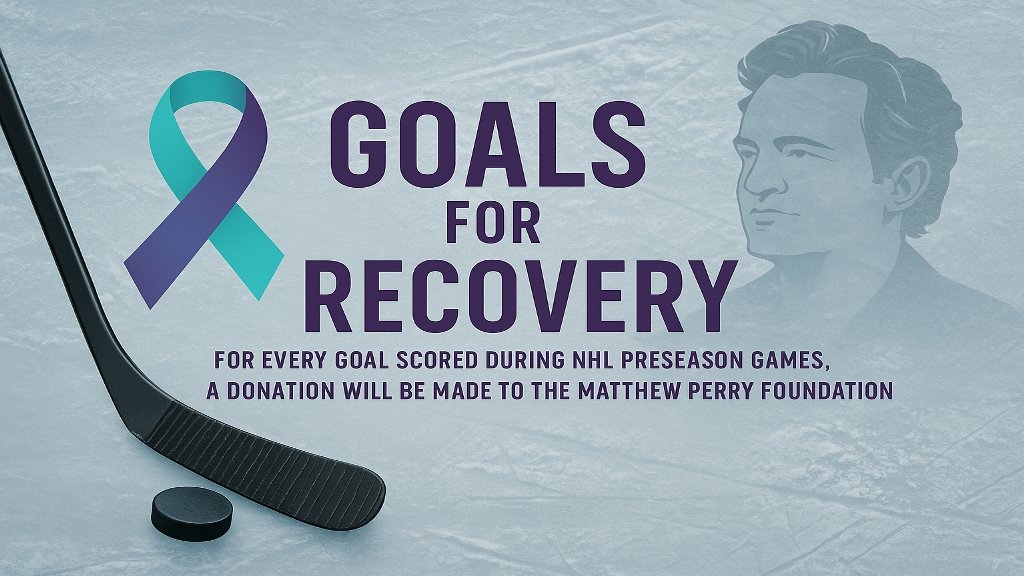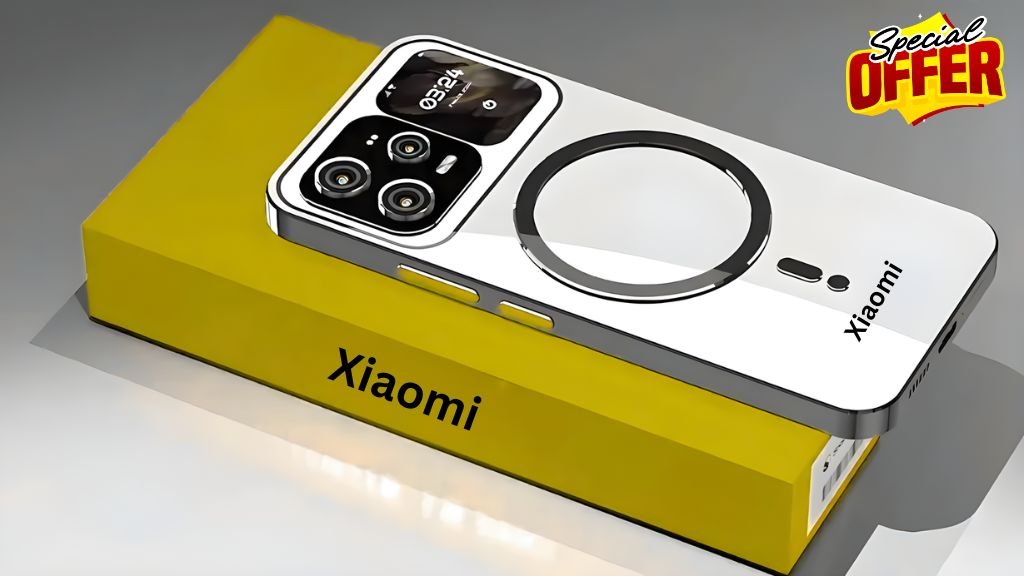The National Hockey League and the Matthew Perry Foundation have joined forces to turn hockey’s preseason energy into meaningful impact through the “Goals for Recovery” campaign. The idea is simple but compelling: every goal scored in preseason becomes a tangible contribution to organizations that help people facing substance use disorders.
By aligning with National Recovery Month and harnessing the visibility of NHL clubs, players, and fans, the partnership reframes game-day excitement as a force for community wellness, hope, and second chances. It also honors Matthew Perry’s lifelong love of hockey and his public advocacy for recovery, channeling his legacy into support for prevention, treatment access, and stigma reduction.
How “Goals for Recovery” Works
Under the preseason initiative, each goal on the ice translates into a donation earmarked for programs connected to recovery and advocacy. The per-goal model makes the fundraising feel immediate and participatory: every odd-man rush, power-play tic-tac-toe, or greasy net-front rebound carries weight beyond the scoreboard. Because the preseason features a packed slate of games across the League, the cumulative effect can be substantial, generating consistent funding over a concentrated period while keeping attention on the cause from puck drop to final horn.
Why the NHL’s Platform Matters
Sports have a rare ability to convene people across backgrounds, and the NHL’s reach gives recovery-focused messaging a megaphone. Arena activations, team broadcasts, and social pushes can normalize conversation around addiction, reinforce that recovery is possible, and direct people to real resources. For families who have been touched by substance use disorder, seeing their sport of choice take a stand can be both validating and practical—spotlighting hotlines, peer networks, and local providers right alongside highlight-reel goals.
Honoring Matthew Perry’s Legacy
Matthew Perry was celebrated worldwide for his acting, but he also openly discussed his struggles and became a compassionate voice for people seeking help. His foundation advances that work by supporting initiatives that improve access to care, elevate best practices, and challenge stigma. Partnering with the NHL—an organization he admired as a fan—extends that legacy onto a grand stage. The campaign doesn’t just memorialize him; it activates his message, converting enthusiasm for hockey into momentum for recovery.
From Stigma to Support
Addiction often hides in silence. By weaving recovery into a marquee sports moment, the campaign helps shift the narrative from judgment to empathy. In-arena mentions, player testimonials, and team storytelling can encourage fans to check in on friends, look up local services, and approach tough conversations with compassion. The more fans hear recovery discussed as a common, treatable health challenge, the easier it becomes for someone in the stands—or at home—to raise a hand and ask for help.
The Power of a Per-Goal Pledge
Per-goal giving creates a natural cadence of awareness: every night brings a new tally, a new opportunity to talk about prevention, and a new reminder that progress can be incremental but meaningful. It mirrors recovery itself—measured one step, one milestone at a time. Teams and players can embrace the format with lighthearted competitive pride—who will drive the most donations tonight?—while keeping the focus on why the campaign exists.
Clubs, Fans, and Communities All Play a Role
The campaign’s impact multiplies when clubs and supporters get creative. Teams can spotlight local recovery partners on their game broadcasts or jumbotron features; fan groups can organize match-night micro-drives or amplify stories on social; community relations departments can tie preseason practices or open skates to resource fairs and screenings. When the whole hockey ecosystem participates, the message resonates from youth programs to NHL arenas.
Turning Visibility Into Action
Awareness is essential, but action changes lives. The “Goals for Recovery” framework points people toward practical next steps—learning about harm reduction, recognizing signs of substance use disorder, and understanding treatment pathways. It encourages families to explore peer support, reminds clinicians and community workers that the sports world stands with them, and signals to those in early recovery that they are seen and supported.
Education on and off the Ice
A strong campaign not only raises funds but also spreads evidence-based information: how to spot risk factors, what compassionate language looks like, what to do in a crisis, and where to find credible help. With NHL teams operating in diverse markets, the same message can be localized—featuring regional hotlines, community clinics, and grassroots organizations—so that every new fan who hears about the effort also hears where to turn nearby.
Measuring Momentum Beyond the Preseason
While the initiative centers on preseason games, its ripple effects can extend well into the regular season. Teams can revisit progress milestones, highlight beneficiary stories, and continue resource promotion on theme nights. Success isn’t just dollars raised; it’s also the number of conversations sparked, referrals made, and individuals who take first steps into care. The League’s storytelling power can keep that momentum alive long after the final exhibition buzzer.
A Blueprint Other Sports Can Adapt
What makes “Goals for Recovery” compelling is its replicability. Other leagues or levels of hockey can adopt per-performance giving—per save, per hat trick, per shutout—or integrate recovery themes into their community calendars. High-school and collegiate programs can translate the model to their scale, shaping healthier locker-room cultures while supporting local nonprofits.
Centering People, Not Just Programs
At its heart, this partnership is about people: athletes who have known teammates in crisis, families who have navigated treatment decisions, and fans who have lost or saved loved ones. By humanizing recovery—through first-person stories, tributes, and survivor voices—the campaign replaces abstract statistics with faces and names, reminding everyone why each preseason goal matters.
The Language of Recovery in Hockey Terms
Hockey offers a natural vocabulary for resilience: forecheck through adversity, kill the penalty of stigma, trust linemates, change on the fly, and skate the full 200 feet even when legs burn. The campaign borrows that language to communicate that recovery is hard work, requires a team, and rewards persistence. Just as a club rebuilds after a tough season, individuals rebuild after hard chapters—with coaching, structure, and support.
From Tribute to Tangible Change
By linking Matthew Perry’s legacy to a clear, measurable mechanism, the NHL channels remembrance into results. Fans who cheer a goal can also cheer a donation; clubs that celebrate preseason wins can also celebrate new resources for treatment and advocacy. Tribute becomes tangible change, and the spirit of the game—teamwork, grit, hope—animates the long fight against addiction’s harms.
What Comes Next by Matthew Perry Foundation
As the preseason unfolds, expect continual storytelling around beneficiaries, updates on totals, and fresh calls to action. The aim is not a one-off gesture but a durable bridge between the hockey community and recovery networks. With each goal, the partnership reinforces a simple promise: no one has to skate this path alone.
A Call to the Hockey Family
Whether you’re a season-ticket holder or a casual fan, there’s a way to be part of this effort—learn more about recovery resources, check in on someone who’s struggling, volunteer with a local organization, or simply share the message that help exists and healing happens. The “Goals for Recovery” campaign shows how a sport defined by teamwork can rally for a cause that touches nearly every community—and how the Matthew Perry Foundation and the NHL can turn the joy of the game into a lifeline.







